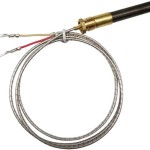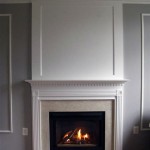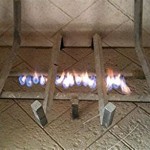How to Build a Stone Surround for an Electric Fireplace
An electric fireplace provides a convenient and aesthetically pleasing heating solution for many homes. Enhancing the visual appeal of an electric fireplace can be achieved by constructing a stone surround, adding texture, depth, and a touch of natural elegance to the room. This article details the process of building a stone surround for an electric fireplace, outlining the key steps and considerations for a successful project.
Planning and Design Considerations
Prior to commencing the physical construction, meticulous planning and design are essential. This phase determines the overall aesthetic and ensures structural integrity. The following factors should be carefully considered:
Size and Dimensions: The dimensions of the electric fireplace unit must be precisely measured. The surround should be proportionally sized to the fireplace, avoiding an overwhelming or underwhelming appearance. Consider the overall dimensions of the wall space where the fireplace will be installed, ensuring ample clearance around the surround.
Stone Selection: Choosing the appropriate stone is crucial for achieving the desired aesthetic. Options range from natural stone veneers to manufactured stone products. Natural stone offers unique textures and variations, while manufactured stone provides consistency in color and size. Consider the weight of the stone, as heavier stones may require additional structural support. Color and style should complement the existing décor of the room.
Style and Design: The design of the surround should align with the overall architectural style of the home. Options range from rustic and traditional designs to modern and contemporary styles. Sketching out different design options can help visualize the final product and identify potential challenges. Consider incorporating features such as a mantel, hearth, or recessed alcoves to enhance the visual appeal.
Safety Considerations: Electric fireplaces generate heat, albeit less intensely than traditional fireplaces. It is imperative to adhere to the manufacturer's recommended clearances between the fireplace unit and combustible materials. Verify local building codes regarding fireplace surrounds, particularly regarding fire safety regulations. Ensure proper ventilation around the fireplace unit to prevent overheating.
Materials and Tools Required
Gathering the necessary materials and tools is a preparatory step that streamlines the construction process. The following is a comprehensive list:
Materials:
- Electric fireplace unit
- Stone veneer or natural stone
- Cement backer board (e.g., HardieBacker)
- Thin-set mortar
- Grout (optional, depending on stone type)
- Construction adhesive
- Wood framing lumber (e.g., 2x4s)
- Screws and nails
- Metal lath (optional, for added adhesion)
- Sealer (for natural stone)
Tools:
- Measuring tape
- Level
- Pencil
- Circular saw or miter saw
- Drill
- Screwdriver
- Mortar mixing tub
- Trowel (notched and flat)
- Grout float (if grouting)
- Sponge
- Hammer
- Safety glasses
- Gloves
- Stone cutting saw (optional, for cutting natural stone)
Construction Process: Step-by-Step Guide
The construction process involves building a sturdy frame, applying a suitable substrate, and adhering the stone veneer. The following details each step:
Framing the Surround:
Construct a wooden frame around the electric fireplace unit, ensuring adequate clearance based on the fireplace manufacturer's recommendations. The frame should be securely attached to the wall studs using screws or nails. The frame serves as the foundation for the surround, providing support for the stone veneer. Ensure the frame is level and plumb to prevent uneven stone placement.
Installing Cement Backer Board:
Cut the cement backer board to fit the frame, leaving a small gap (approximately 1/8 inch) between the boards. Attach the backer board to the frame using screws specifically designed for cement board. Stagger the seams to increase structural integrity. Cement backer board provides a stable and moisture-resistant substrate for the stone veneer, preventing moisture absorption and potential damage to the underlying framing.
Applying Metal Lath (Optional):
For added adhesion, particularly with heavier stones, attach metal lath to the cement backer board using staples or nails. Metal lath provides a textured surface that allows the mortar to grip more effectively. Overlap the edges of the metal lath by a few inches to ensure complete coverage.
Applying the Stone Veneer:
Mix the thin-set mortar according to the manufacturer's instructions, achieving a consistency similar to peanut butter. Apply a layer of mortar to the back of each stone veneer using a notched trowel. Press the stone veneer firmly onto the cement backer board, ensuring good contact with the mortar. Start at the bottom and work your way up, maintaining consistent spacing between the stones. Use shims or spacers to ensure even spacing between the stones. Periodically check the level of the stone veneer to ensure proper alignment.
Cutting Stones (If Necessary):
If necessary, cut the stone veneer to fit around corners or edges using a stone cutting saw or a wet saw. Wear safety glasses and gloves when cutting stone. Smooth the cut edges with a rubbing stone or sandpaper to prevent sharp edges.
Grouting (Optional):
Depending on the type of stone veneer used, grouting may be necessary to fill the gaps between the stones. Allow the mortar to cure for the recommended time before applying grout. Apply the grout using a grout float, pressing it into the gaps between the stones. Wipe off excess grout with a damp sponge. Allow the grout to cure according to the manufacturer's instructions.
Sealing (For Natural Stone):
For natural stone, apply a sealant to protect the stone from staining and moisture damage. Follow the manufacturer's instructions for applying the sealant. Allow the sealant to dry completely before using the fireplace.
Final Touches:
Inspect the surround for any imperfections and make any necessary repairs. Clean the stone veneer with a mild detergent and water. Install a mantel or hearth, if desired. Ensure all electrical connections are properly installed and grounded. Verify that the fireplace unit is functioning correctly.

Electric Fireplace Diy With Custom Surround Angela Rose Home

Faux Stone Fireplace Entertainment Center Genstone

Diy Overgrouted Stone Fireplace Shoe Makes New

Diy Faux Plaster Fireplace Surround Chelsey Freng

Simple Diy Fireplace Wall Faux Stone Tv Project

How To Build A Diy Fireplace With Electric Insert H2obungalow

ᑕ❶ᑐ Faux Stone Electric Fireplace Where Does It Match Best

Diy How To Build A Fireplace In One Weekend Whitney Hansen Money Coaching

How To Build A Diy Built In Fireplace With An Electric Insert The Creative Mom

Diy Fireplace With Electric Insert Angela Marie Made
Related Posts








